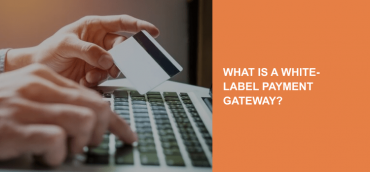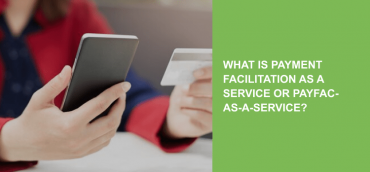Considering the increase in demand for online shopping and a variety of payment options in recent years, e-commerce merchants should keep up with this pace.
The speed of transaction and its fulfillment with no delay shapes customers’ buying experience and encourages them to return to the merchant again and again. It is in the best interest of merchants not only to provide an excellent service but also to use an infrastructure that can expand their business opportunities. A payment orchestration platform is able to combine all the above.
What is a payment orchestration platform?
The platform’s name speaks for itself through the analogy with the musical orchestration. Payment Orchestration Platform (POP) is software that represents a unified technical structure for operating all stages of online payment processing from routing through to reconciliation. POP facilitates front-end and back-end integration between a merchant’s website and various payment service providers (PSPs).
Front-end orchestration aims to simplify the integration between a payment source and a gateway. Due to a unified interface, simplified integration can be achieved along with access to various payment methods, fraud prevention, and additional features supplied by service providers. Back-end’s integration objective is even more valuable. It ensures that the client completed the payment process successfully without any delay and that the preferred payment method was available.
Basically, through only one integration with POP, the merchant connects with multiple payment processors and PSPs. In this way, a merchant gets access to accounts he opens for connection with different service providers through one platform. Using POP, he does not need to develop such accounts and support their technical integration, so it will no longer be necessary to involve third-party service providers.
Another valuable benefit for a merchant is that the payment orchestration platform expands the possibilities for e-commerce. The geography of PSP and payment method connections worldwide is almost boundless and is limited only by the capacity of the particular POP. Additionally to integrating many PSPs and payment methods, the platform also consolidates all processing of a payment, its routing, settlements, and reporting. While having multiple PSPs integrations you would need to collect reports from many providers, POP has the option of receiving all reports on one platform, which contributes to advanced data analysis capabilities.
Who needs a payment orchestration platform?
The demand for e-commerce, as well as competition in this area, is constantly increasing. Since payments are a crucial part of customers’ experience, the merchants need to dedicate sufficient attention to how fast, convenient, and secure their customers can make them. It will affect whether the buyer would complete the payment process or leave it halfway because of the difficulties. The role of the payment orchestration platform in providing quality payment software may be fundamental.
Growing demand for POPs in the nearest future is confirmed by research. According to Global Market Estimates, Global Payment Orchestration Market will expand at a CAGR of 20.2% from 2021 to 2026. However, there is the question of who will profit from using a payment orchestration platform the most?
Being a versatile solution, POP will be beneficial for multiple e-commerce industries. There will be no use in it for you only in case you are a merchant acquired by one acquirer, serving customers from one country provided they use credit cards alone. But if you are planning to scale your business, expand the geography of payments and make the customers’ experience better due to payment process simplification, then POP will be beneficial.
Let’s take a closer look at what benefits you can get from using a payment orchestration platform:
- Broaden the geography of users.
POP supports multiple PSP connections worldwide along with payment methods preferred by locals. Therefore, the merchant can access foreign markets and reach more clients across the globe.
- Enhance conversion.
The ability to connect to many PSPs will not only expand the business worldwide but also smoother the payment process. In case of a delay, POP will automatically switch from failed PSP to a working one, providing a client with uninterrupted access to the payment process with multiple payment methods available. Such a satisfactory customer experience will enhance the conversion rate.
- Save on transaction fees.
One of the significant advantages of the platform is that it chooses the best PSP for each transaction. Transactions are handled through channels with minimal transaction fees, thereby reducing costs significantly.
- Strengthen the security of payments.
PCI compliance is required for POPs, as well as for PSPs, that is why the merchant can count on the security of payments. Besides, with the usage of POP, the merchant is not as dependent on the specific provider which holds customers’ data in its token vault, since the platform has its own storage to preserve tokens.
- Receive detailed reports.
Instead of collecting data from many PSPs, you will get all reports on one platform that offers real-time analytics, which will expand the possibilities for improving your e-commerce.
- Integrate more easily.
An excess to numerous PSPs and all of the above-mentioned benefits of POP will be available to you through only one integration.
After appreciating the advantages of POP, the next step is to get it.
How to get a payment orchestration platform?
Because it is a universal and ready-to-go solution, basically, you need to choose a company that provides a POP according to your needs. These needs are exactly a determinant at the beginning of getting a platform because POP that will manage your payments should correspond to your business model. There are many decisive factors such as your budget, legislation, markets, and the frameworks within which your software works. In this matter, you may need to consult a payment business specialist. From a technical point of view, there are two options for launching POP.
- Turn-key POP
It is a budgetary and simple way to start working with a ready-to-use platform. The providers of turn-key POP supply a ready-to-launch middleware for PO purposes. It takes place in between the merchant, PSPs, and payment gateways. The integration in this option is easy, and through it, the merchant gets access to multiple connectors, PSPs, and gateways. The restrictions of this option may be in a limited number of productional installations, the priorities in payment routing that do not match the merchant’s preferences. Regarding pricing, generally, it is the pay-per-payment or pay-per-API-call model.
- Self-service POP
This option is suitable for merchants looking for a customized non-standard solution. Serf-service POP is created from scratch according to the merchant’s requirements, along with the transaction orchestration. The main limitations of this option are its high cost and the amount of time spent on its creation. While turn-key POP provides you with a ready-made solution, self-service POP requires more effort. However, in the long term, this solution will be more economical and adaptable for further development, because it fully covers the needs of a merchant.
Another efficient solution is to combine these two options. In this solution, the most important features of Payment Orchestration will be already included in a payment framework on which you can build your own POP. After deciding which option is more suitable for your type of business, you can proceed to the platform’s usage.
How to use POP?
The usage of the platform depends on whether it is accessible and easy to use. Some POPs may require IT to get involved. But if the platform is adapted for business users, its management should not be hard. To start taking advantage of an orchestration platform, you need to connect its software to your payment channels. After that, you will gain access to POP’s dashboard. Through this dashboard, you are able to control all the processes regarding your payments, such as configuration, billing, user management, etc. Since a picture is worth a thousand words, feel free to request our demo, which shows how our payment orchestration works in detail.




